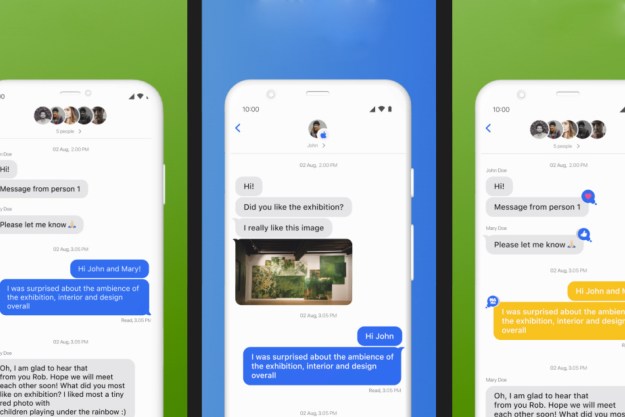
Over-the-top (OTT) apps such as WhatsApp, Facebook Messenger, and BlackBerry Messenger will be the driving force over the next few years, climbing from 31 trillion messages in 2014 to over 100 trillion in 2019. The 200-percent increase in usage of alternative messaging apps is largely due to the fact that sending messages on these platforms is typically free. OTT messaging apps like WhatsApp are technically free because they use Internet data for transmissions. Meanwhile, SMS and MMS messages use mobile carrier networks to send messages, so each text adds up to an amount you have to pay each month.
There is still time for messaging apps to figure out how to make money off their growing user base, but it won’t be easy.
One would think that this traffic increase would generate more revenues for alternative messaging apps, but that’s not the case according to Juniper Research. Revenues will decline from $113.5 billion in 2014 to $112.9 billion in 2019, a drop of $600 million.
The concern here is that while traditional SMS messaging had no issues generating income, alternative messaging apps haven’t figured out how to properly monetize their services. They have found that many consumers, particularly in Asian markets, are reluctant to any sort of advertising within the apps. The only thing that has worked is in-app purchases for sticker sets, but that isn’t enough.
Payments are another option, but it’s too soon to tell how popular they will be in messaging apps. Several apps are now offering the ability to send money to other users in exchange for a small fee. Examples of this are Line Pay and Snapchat’s Shapcash. You can even send money through Facebook Messenger.
These messaging services will certainly cut into the SMS pie, but it’s not all doom and gloom for the mobile carriers. While person-to-person (P2P) SMS messages will likely continue to fade, the use of application-to-person (A2P) SMS messaging are projected to grow. A2P messages are those automated messages sent from a computer to users for medical appointment reminders, confirmation codes, and flight updates, among other things.
With 2019 four years away, there is still time for the OTT messaging apps to figure out how to make money off its growing user base, but it won’t be easy. The $600 million drop doesn’t seem like much since it only represents about 1 percent, but that’s only the breakeven point. Since overall traffic is increasing by 200 percent, the revenue should go up proportionally. Going with a modest increase of 100 percent in revenue yields a target of $227 billion. That is $114 billion over the 2019 estimate, which represents a huge mountain to climb.
Editors' Recommendations
- Are WhatsApp and Facebook down? Here’s what you need to know
- Google Messages vs. Samsung Messages: Which app should you use?
- WhatsApp used to be one of my favorite apps. Now, I can’t stand it
- WhatsApp finally lets you edit sent messages. Here’s how to do it
- What is WhatsApp? How to use the app, tips, tricks, and more


